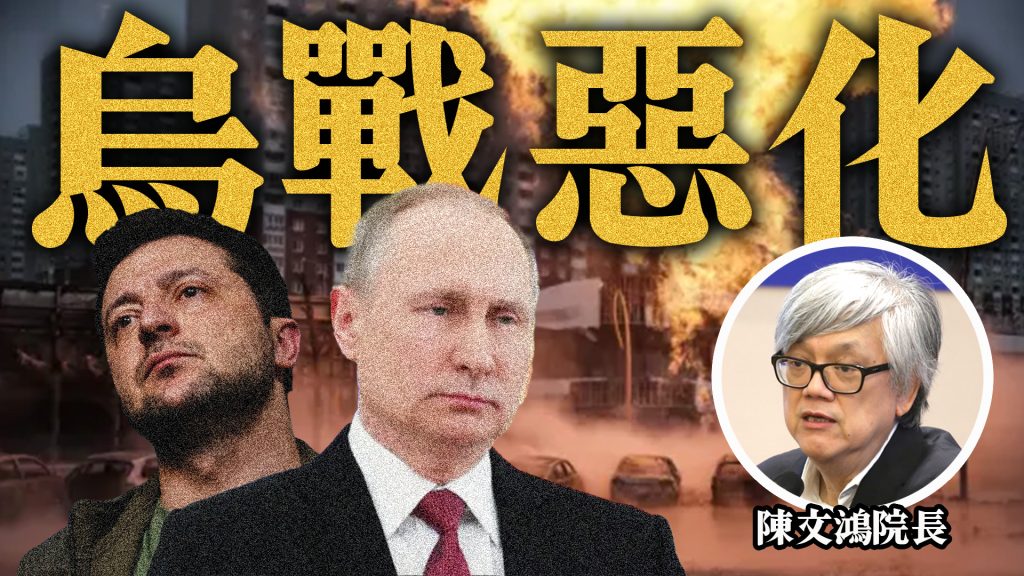
8月26日,俄羅斯大炸烏克蘭境內設施,重點是軍工生產基地、機場、能源設備。表面上的目的是在秋冬氣溫下降時製造生活危機,同時削弱烏克蘭的電力供應,妨礙其軍事行動。不過,北約早就把北約境內變成烏軍戰機等的庇護站,周邊國家全力輸電往烏克蘭,陸海保持能源的輸送,以北約的補充來抵銷俄羅斯的破壞,減少由此對烏軍佔領和政治、社會、生活的打擊。俄羅斯還是強調不襲擊民用設施,與烏克蘭和北約相比,仍是自我束縛,被動防守為主。
北約在俄境的攻勢雖然受制,卻還未被消滅。有說是俄國故意誘敵深入以求清剿,實際未必是如此計謀。俄軍力有不逮,也反映軍隊結集需時。俄國的布防應該不只針對庫爾斯克突襲的北約軍,更要防範北約在庫爾斯克以外的突擊。因此,俄國組建邊境各州的集團軍,以作防衞,也可以在形勢需要時,伸延入相連烏境。
另有一說,是北約入侵的軍隊不止於一直認為的一萬多人,可能有二、三萬人,且近日繼續有軍隊加入。俄羅斯可能最初低估了北約入侵的兵力,也為穩守布防,反攻之力強度不足,致北約軍可佔據多時不退。若北約軍可以在庫爾斯克固守陣地,作用便不僅為緩衝區、爭取談判時的籌碼,更可成為攻俄的橋頭堡,在適當時候作大舉侵俄的先導。
俄軍要驅趕北約的部隊,北約要盡量堅持不退,從烏東抽調兵力支援,戰事便不如俄羅斯所說那樣進展迅速,又成另一苦戰之所,勝敗決定於在烏國境內的火力,庫爾斯克突擊已逐步轉變,烏東北部的大戰場支援力量多少,俄羅斯對烏境後勤補給的打擊怎樣,鄰近包括蘇梅區、哈爾科夫州和波塔瓦州,未必直接威脅基輔,卻是烏軍在烏東的後衞。若俄軍反攻,西出佔據蘇梅,烏東的烏軍已逐步退卻,俄軍進蘇梅便可前後夾攻,把烏軍打敗,俄烏邊境地區便盡成俄羅斯所控制,以此進行談判,烏克蘭勢被分裂,與二次大戰後的東西德模式相近,美國和北約可會容許這樣的逆轉?
庫爾斯克突擊帶來俄軍反攻的機會。在北約方,必然用全力求取戰場上扭轉敗局。在俄方,必然借機攻入烏境與烏東兵力合圍,對烏的大肆空襲是打擊北約的支援力量,包括炸基輔以威嚇烏克蘭政權。烏戰只會愈打愈劇烈,美國總統選舉可以將之阻止嗎?
陳文鴻 研究院院長
東方日報 8月27日
Ukraine/Russia Conflict Worsen
On August 26, Russia launched a major bombing against military production facilities, airports, and energy infrastructures in Ukraine to create a supply threat in the coming cold seasons, while simultaneously weakening Ukraine’s electricity supply and hindering its military operations. However, NATO has long turned its territory into a sanctuary for Ukrainian military warcraft, and neighboring countries are fully supporting Ukraine by supplying electricity. This NATO support offsets the damage caused by Russia, reducing the impact on Ukrainian military occupation as well as on its political, social, and daily life. Russia continues to emphasize that it does not attack civilian facilities, which, compared to Ukraine and NATO, reflects a self-imposed constraint, primarily adopting a passive defensive posture.
Although NATO’s offensive in Russian territory is constrained, it has not been eliminated. Some suggest that Russia is deliberately luring the enemy deeper to seek a cleanup, but this may not be the actual strategy. The Russian military’s capabilities are limited and reflect the time needed for troop mobilization. Russia’s defensive deployments should not only target the NATO forces in the Kursk raid but also guard against NATO assaults outside of Kursk. Therefore, Russia is forming group armies in its border regions for defense and could extend into adjacent Ukrainian territory if necessary.
There are claims that the invading NATO forces are not just the previously estimated tens of thousands, but possibly between 20,000 to 30,000, with additional troops joining recently. Russia may have initially underestimated the scale of the NATO invasion. Russian lacks sufficient defense capacity which allows NATO forces to hold positions for extended periods. If NATO can secure positions in Kursk, the occupied areas would not only be as a buffer zone and bargaining chip for negotiations but could also become a springboard for attacking Russia, leading to a larger scale invasion at certain time.
The Russian military aims to drive out NATO forces, while NATO strives to hold its ground, drawing troops from eastern Ukraine for support. The fight back is thus not progressing as quickly as Russia claims. The NATO invasion in Kursk turns into another bitter battle where victory or defeat is determined by firepower of Ukrainian side. The Kursk raid is gradually transforming; the support forces in the northeastern battlefield and the effectiveness of Russia’s logistical strikes against Ukraine are key factors. Regions neighboring Ukraine, including Sumy, Kharkiv, and Poltava, may not directly threaten Kyiv, but they serve as rear support for Ukrainian forces in the east. If the Russian military counterattacks and occupies Sumy, the Ukrainian forces in the east could gradually retreat, allowing the Russian army to surround and defeat NATO invaders. This would mean that the border regions between Russia and Ukraine would come under Russian control which facilitates negotiations. Ukraine could end up divided, resembling the post-World War II model of East and West Germany. Would the United States and NATO allow such a reversal?
The Kursk raid presents an opportunity for a Russian counteroffensive. NATO will undoubtedly exert all efforts to turn the tide on the battlefield. On the Russian side, there will be attempts to penetrate Ukrainian territory and encircle Ukrainian forces in the east. Large-scale airstrikes against Ukraine aim to undermine NATO’s supporting power, including bombing Kyiv to intimidate the Ukrainian government. The conflict in Ukraine is only becoming more intense. Can the U.S. presidential election stop Ukraine conflict?
Dr Thomas MH Chan, Director One Belt One Road Research Institute, Chu Hai College of Higher Education


